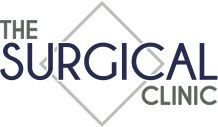Strokes can be devastating, often leaving individuals with long-lasting disabilities and impairments. But here’s the thing: many strokes are preventable. By making simple yet impactful lifestyle changes, you can significantly reduce your stroke risk. So, let’s dive into this comprehensive stroke prevention guide and learn how to take charge of your health.
Understanding Your Risks of a Stroke
Age and family history play significant roles in determining your susceptibility to stroke. While you can’t control these things, you can manage numerous other risk factors. Being aware of these risks is the first step towards prevention.
Lower Blood Pressure
High blood pressure is often dubbed the silent killer, and rightly so. It’s a major contributor to stroke risk, doubling or even quadrupling the chances if left uncontrolled. But fear not, keeping your blood pressure in check is within your grasp.
- Goal: Aim for a blood pressure of less than 120/80. However, personalized goals may be set during a consultation with your healthcare provider.
- How to Achieve It: Reduce salt intake, opt for a balanced diet rich in fruits, vegetables, fish, and whole grains, engage in regular physical activity, and quit smoking if you’re a smoker. Medication may also be necessary in some cases.
Lose Weight
Obesity raises your risk of stroke, along with other complications like high blood pressure and diabetes. Shedding just a few pounds can significantly affect your stroke risk.
- Goal: Work with your doctor to set achievable weight loss goals specific to your individual needs.
- How to Achieve It: Focus on calorie control, increase physical activity levels, and adopt sustainable lifestyle changes for long-term success.
Exercise More
Exercise isn’t just about fitting into those skinny jeans; it’s a powerful stroke reducer in its own right. Aim for regular, moderate-intensity physical activity to reap the benefits.
- Goal: Make time for at least 30 minutes of moderate exercise 3-5 days a week.
- How to Achieve It: Find activities you enjoy, such as walking, cycling, or dancing, and incorporate them into your daily routine. Remember, every little bit of movement counts.
Moderate Alcohol Consumption
While a glass of wine may be touted for its heart-healthy benefits, excessive alcohol consumption can escalate stroke risk. Keep your alcohol intake in check to safeguard your health.
- Goal: Limit alcohol consumption to one drink per day for women and up to two drinks per day for men.
- How to Achieve It: Practice moderation, choose healthier beverage choices, and be mindful of portion sizes.
Treat Atrial Fibrillation
Atrial fibrillation, characterized by irregular heartbeat, significantly increases the risk of stroke due to clot formation in the heart. Taking steps to manage this condition is crucial.
- Goal: Seek medical attention if you experience symptoms like palpitations or shortness of breath.
- How to Achieve It: Follow your doctor’s recommendations, which may include medications or other interventions to regulate heart rhythm and reduce stroke risk.
Manage Diabetes
High blood sugar levels wreak havoc on blood vessels, increasing the likelihood of clot formation and stroke. Keeping diabetes under control is key to minimizing this risk.
- Goal: Maintain optimal blood sugar levels through diet, exercise, medication, and regular monitoring.
- How to Achieve It: Adopt a diabetes-friendly lifestyle, focusing on balanced eating, regular physical activity, and following prescribed treatment regimens.
Quit Smoking
Smoking not only damages your lungs but also accelerates clot formation, making it a major contributor to stroke risk. Ditching the cigarettes is one of the best gifts you can give yourself.
- Goal: Kick the habit for good.
- How to Achieve It: Seek professional support, explore smoking cessation aids, and stay persistent. Remember, every attempt brings you closer to success.
Recognizing Stroke Signs
Lastly, it’s crucial to be able to identify the signs of a stroke and act promptly. Remember the acronym FAST:
- Face drooping
- Arm weakness
- Speech difficulty
- Time to call 911
Don’t ignore these symptoms; time is of the essence when it comes to stroke treatment.
Support in Middle Tennessee | The Surgical Clinic
Understanding stroke, its risk factors, and preventive measures is crucial for safeguarding your health and well-being. By taking proactive steps such as managing blood pressure, staying active, and quitting smoking, you can significantly reduce your risk of experiencing a stroke. Remember, every small change you make today can greatly impact your future health.
If you’re looking for expert guidance and support in managing your health, consider reaching out to The Surgical Clinic. With multiple locations across Middle Tennessee, we provide comprehensive care and specialized treatment options to help you stay on track toward a healthier, stroke-free life.
Take charge of your health today and schedule a visit with The Surgical Clinic—it could be the first step towards a brighter, healthier future.
Frequently Asked Questions
What exactly is a stroke or brain attack?
A stroke, sometimes called a “brain attack,” happens when there’s a disruption in the blood supply to a part of the brain. This can lead to symptoms like weakness in the arms or legs, trouble speaking or understanding speech, numbness, or changes in vision.
What’s a transient ischemic attack (TIA)?
A TIA is like a mini-stroke. It’s when there’s a brief interruption in blood flow to the brain, causing symptoms that go away within 24 hours.
What causes these blood supply interruptions in arteries?
The main culprits are artery diseases like atherosclerosis, where plaque builds up, or aneurysms, weak spots in arteries that can burst. Blood clots from the heart can also block brain arteries.
How can I tell if I’m having a stroke?
If you suddenly feel weak, have trouble speaking, or experience facial drooping, it could be a stroke. Remember FAST: Face drooping, Arm weakness, Speech difficulty, Time to call 911 immediately.
What should I do if I suspect I’m having a stroke?
Call 911 immediately. Every second counts because brain damage can happen fast. Also, note the time your symptoms started—it’s crucial for treatment options.
How can I prevent a stroke?
Prevention is key. You can lower your risk by managing things like high blood pressure, quitting smoking, staying active, and eating healthy. It’s about taking care of your body.
What happens after a stroke?
The effects vary depending on which part of the brain is affected. It can affect physical abilities, speech, vision, relationships, or employment. But yes, there is life after a stroke.
Am I likely to have another stroke if I’ve had one before?
Unfortunately, the risk goes up after a stroke. However, managing risk factors like high blood pressure and working closely with your doctor can help reduce the chances of another one.
What are my risk factors for stroke?
Some things like age, family history, and race can’t be changed. But others, like high blood pressure, smoking, and diabetes, can be managed. Knowing your risks helps you take steps to lower them.
Remember, taking care of your health today can make a big difference tomorrow. Stay informed and take action to protect yourself from stroke.

